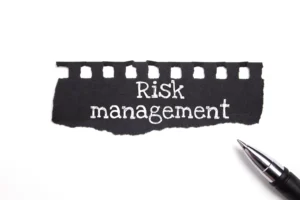When you think about forex trading in 2025, it’s impossible to ignore the word volatility. Huge moves now happen within minutes. Prices can reverse suddenly, and even the best trade setups are at the mercy of global events, unpredictable news, or a flash move from a central bank. In this environment, success is less about perfect entries and more about bulletproof forex risk management strategies. If you want to survive and thrive, you need to turn risk control into an art—and a daily habit.
Many traders dream of finding a strategy that never loses. Yet, every professional will tell you that such a “holy grail” doesn’t exist. What separates the winners from the losers is simple: the ability to keep losses small, stay in the game, and avoid emotional blow-ups. Effective risk management in forex trading isn’t just about setting a stop loss; it’s about building a mindset and a routine that treats every trade as a business decision. This article breaks down the real-world tactics, tools, and thinking that can help you master volatile forex market protection and make currency trading risk controls your greatest ally.
The New Age of Forex Volatility: What Changed?
Volatility in forex is not new, but 2025 has brought a whole new level of unpredictability. Artificial intelligence, algorithmic trading, and geopolitical shocks make markets move faster and more violently than ever. A tweet from a political leader, a sudden rate change, or a black swan event can swing a pair by 200 pips before most traders can react.
This is why you cannot rely on outdated methods. Surviving forex volatility in 2025 means adopting forex risk management strategies that are dynamic, not static. For example, many traders have moved from fixed-pip stops to volatility-based stops, using tools like ATR (Average True Range) to keep their protection relevant. If you set your stop too tight, normal market noise can take you out. If it’s too wide, you risk losing more than planned. It’s a balancing act that requires constant attention.
Consider how last year, when the Swiss National Bank made a surprise move, traders who ignored market context and didn’t use stop losses saw entire accounts wiped out in seconds. On the other hand, those with robust risk management in forex trading, diversified exposure, and the discipline to step back during news events found themselves ready to profit when the dust settled. These are the stories you hear from survivors at trading meetups, not from those who blew up and left the scene.
Real Value of Position Sizing
Every risk management plan begins with position sizing. This isn’t just about picking a random lot size; it’s about calculating, in advance, how much of your capital you are willing to put at risk per trade. Most seasoned traders use a percentage of their account balance—often just 1% or even less.
Let’s say you have a $20,000 account. You decide to risk 1% on each trade. That means your maximum risk is $200 per position. This limit keeps you in the game, even after a string of losses. You’ll never lose so much on a single trade that you can’t recover. In volatile forex market protection, position sizing is your first firewall. It makes you think in terms of the big picture, not just the current trade.
In practice, some traders get more advanced and adjust their position size based on the volatility of the pair. For example, trading GBPJPY during a Bank of England press conference is riskier than trading EURUSD on a slow news day. They might cut their size on high-volatility trades and go slightly larger on stable setups. This flexibility is what makes position sizing so powerful as a currency trading risk control.
Leverage: The Temptation and the Trap
Leverage is the double-edged sword that attracts many to forex but also destroys accounts in record time. In 2025, tighter regulations have limited how much leverage brokers can offer to retail clients. Still, even at lower levels like 1:20 or 1:30, it’s easy to take oversized risks.
A lot of new traders get hooked by the idea that leverage can multiply profits quickly. What they don’t realise is that it multiplies losses at the same speed. For example, risking your entire account on a single over-leveraged position means that a 2% move in the wrong direction could leave you with nothing. It’s a painful lesson, and forums are full of stories from those who learnt it too late.
Professional traders use leverage as a tool, not a crutch. They treat it with respect. Often, they use lower leverage than allowed by their broker, even if it means missing out on the occasional big win. This discipline is key to surviving forex volatility in 2025. Remember, your goal is to last through many trades—not gamble everything on one idea.
Stop Loss and Take Profit: Your Automatic Bodyguards
Every experienced trader has a story of ignoring a stop loss and regretting it. It usually ends with a blown account or a painful lesson. That’s why setting a stop loss is not optional; it’s essential. The market can and will do things you don’t expect. When you set a stop, you define your maximum risk before the trade even starts.
Many traders use tools like the ATR to set stops that reflect real-time volatility. If EURUSD has a 40-pip ATR today, a 15-pip stop makes little sense—it’ll get triggered by market noise. But a 60-pip stop might offer just the right volatile forex market protection.
Take profit orders are just as important. There’s nothing worse than watching a winning trade turn into a loser because you got greedy or distracted. A take-profit level locks in gains, keeps you disciplined, and removes second-guessing. For example, if you’re trading a breakout after a strong economic release, your take profit might be based on a previous resistance level or a measured move.
Diversification: Spreading the Risk, Increasing Your Edge
Diversification is more than just a buzzword—it’s a necessity for surviving forex volatility in 2025. The old “all eggs in one basket” problem has ended more trading careers than any indicator ever invented. The idea is simple: by trading multiple, uncorrelated pairs, or even adding commodities and indices, you reduce the odds that one surprise will blow up your entire account.
For example, if you’re long on EURUSD and also long on GBPUSD, you’re effectively betting twice on the euro’s strength. If a shock hits the euro, both positions lose. But if you’re long on USDJPY and short on EURAUD, your risks are more spread out.
Some advanced traders diversify across strategies too—combining trend following, breakout, and mean reversion systems. This layered approach smooths out equity curves and acts as another layer of volatile forex market protection.
The Risk-Reward Ratio: Why Small Wins Add Up Over Time
One of the most misunderstood aspects of risk management in forex trading is the risk-reward ratio. Too many beginners fixate on win rates and ignore the size of their losses versus wins. However, a trader who wins 40% of the time with a 1:3 risk-reward ratio will often outperform someone who wins 70% of the time with a 1:1 ratio.
For instance, you risk 50 pips to make 150. Even if you lose six out of ten trades, you’re still in profit. That’s real currency trading risk control—letting math and discipline do the heavy lifting.
A practical example: during the volatile periods of early 2025, one trader tracked her trades and found that, even with a string of losses, sticking to her risk-reward rule made her profitable by the end of the month. She didn’t win more often, but she lost less and won bigger.
Hedging: The Professional’s Safety Net
While not every trader uses hedging, it is a staple among institutional players and many advanced retail traders. Hedging means taking an offsetting position to reduce risk. For instance, if you’re long on EURUSD, you might be short on USDCHF if they tend to move inversely.
Hedging can also mean using options, such as buying a put to protect a large long position. In times of major political events or economic uncertainty, a well-placed hedge can be the difference between surviving forex volatility in 2025 and facing a margin call.
Of course, hedging adds complexity, and it isn’t a substitute for other forex risk management strategies. But when used thoughtfully, it’s a powerful currency trading risk control tool that can smooth out your results and let you sleep at night.
Economic News and Events: The Volatility Trigger
Every trader knows that big moves often happen around major news releases. The problem is that these moves can be wild and hard to predict. If you’re not prepared, you might suffer massive losses—or miss out on golden opportunities.
The best approach is to always check the economic calendar. If an important release is coming, consider reducing your position size, tightening your stops, or even sitting out altogether. Some traders only trade after the dust has settled, while others use straddle orders to catch a breakout in either direction. During the March 2025 FOMC meeting, for example, the US dollar jumped more than 200 pips in minutes. Those who managed their risk were ready, while others were swept away.
Why Discipline Matters More Than Predictions
Even with the best technical tools, your mind is the real battleground. Traders who can’t handle stress or get greedy in the face of volatility will always struggle. That’s why so many top performers keep a trading journal—not just for entries and exits, but to note their feelings, thoughts, and reactions.
If you notice you’re making emotional decisions—chasing losses, ignoring stops, doubling down on bad trades—it’s time to step away. Some professionals use rules like, “If I lose three trades in a row, I walk away for the day.” Others meditate, exercise, or talk to a mentor to keep their head clear. Surviving forex volatility in 2025 often comes down to who can stay calm when everyone else is panicking.
Automation and Technology
In today’s markets, automation is a secret weapon. Automated systems and bots can enforce your forex risk management strategies by setting stops, scaling position size, and even stopping trading after a preset loss. This removes emotional interference and ensures that your currency trading risk controls are always active.
For example, you might set your platform to auto-close all trades if you lose 5% in a day. Or, use scripts that adjust your stops based on real-time volatility readings. In 2025, many traders combine their own analysis with smart technology to stay ahead in the game.
Daily and Weekly Loss Limits
Not every day will be a winning day. The pros know when to quit, and that’s what keeps them alive. Setting daily and weekly loss limits is one of the best forex risk management strategies available. If you hit your loss cap, stop trading and come back with a clear mind the next day.
Some use the “three strikes” rule—after three consecutive losses, they close their screens. Others set a hard dollar amount or percentage. These habits prevent revenge trading and spiralling losses. Volatile forex market protection is just as much about knowing when to walk away as knowing when to trade.
Continuous Review
The market is always changing. What worked last month may not work today. That’s why continuous review is a must. Keep a detailed trading log, analyse what worked, and update your strategies as needed.
For example, after a series of news-related losses, you might decide to avoid trading during announcements. Or, if you find your stops are too tight, you adjust your strategy to match current volatility. This flexible approach to risk management in forex trading is what keeps the best traders profitable year after year.
How Risk Management Saved Real Traders
Consider Alex, a swing trader from London. In 2025, he faced a brutal month with a string of losses on GBP pairs. Instead of increasing his risk, he cut his position size, followed his stop-loss rules, and diversified into commodities. By the end of the quarter, his account had not only survived but grown. He credits his results to strict currency trading risk controls and the discipline to adapt when conditions changed.
Then there’s Priya, a new trader in India. She started small, risking only half a percent per trade. Despite several losing weeks, her account stayed healthy. She learnt from every trade, kept a detailed journal, and made volatility her teacher instead of her enemy.
These stories are not rare. The real secret of surviving forex volatility in 2025 is not brilliance or luck, but relentless, intelligent risk management.
Make Risk Management Your Foundation for Success
The truth is, no strategy, no indicator, and no guru can protect you from the reality of volatile markets. Only robust, flexible, and well-practiced forex risk management strategies will keep you in the game. Focus on position sizing, leverage control, disciplined use of stops and take profits, strategic diversification, strong risk-reward habits, and psychological resilience. Lean into automation and review your performance often.
Surviving forex volatility in 2025 is not just possible—it can be your edge. Every trade is a lesson, every loss is data, and every win is a chance to reinforce good habits. Make risk management your daily practice, and you will not only survive but thrive, no matter how wild the currency markets become.
Read here to learn more about “EMA vs SMA: Proven Secrets to Better Trading in Fast Markets“.

I’m Chaitali Sethi — a seasoned financial writer and strategist specializing in Forex trading, market behavior, and trader psychology. With a deep understanding of global markets and economic trends, I simplify complex financial concepts into clear, actionable insights that empower traders at every level. Whether it’s dissecting winning strategies, breaking down market sentiment, or helping traders build the right mindset, my content bridges the gap between information and implementation.

